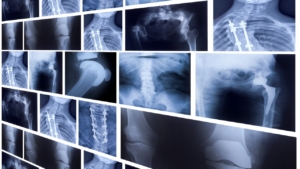Key Takeaways
- High-quality images improve diagnostic accuracy, with digital radiography systems ensuring optimal clarity and contrast.
- Seamless system integration with DICOM standards enhances workflow efficiency and allows for easy access to imaging data.
- Dose efficiency technology minimizes radiation exposure while maintaining high diagnostic precision for patient safety.
- Versatile imaging solutions support multiple specialties, making them ideal for hospitals, clinics, and imaging centers.
- Cloud-based storage and AI-driven diagnostics improve accessibility, streamline processes, and enhance decision-making for healthcare professionals.
Choosing the right imaging healthcare solution is crucial for delivering accurate diagnoses and enhancing overall patient care. In today’s fast-paced medical environment, healthcare providers require digital imaging equipment that ensures efficiency, seamless integration, and superior image quality. With advancements in technology, imaging solutions have evolved to meet the increasing demands of healthcare professionals.
Whether you operate a hospital, an independent imaging center, or a private clinic, selecting the best medical imaging solutions will help streamline workflows, improve diagnostic accuracy, and enhance patient outcomes.
This guide explores seven essential features to look for when investing in imaging healthcare solutions.
1. Superior Image Quality for Accurate Diagnoses
High-quality images are the foundation of effective diagnostic imaging. A system that provides sharp, high-resolution images ensures better visualization of internal structures, leading to more accurate diagnoses. Digital radiography systems equipped with advanced detectors, such as amorphous selenium and flat panel detectors, enhance image clarity by reducing noise and improving contrast.
Image quality also plays a crucial role in detecting abnormalities early. Whether examining an x-ray image for fractures or using magnetic resonance imaging for soft tissue analysis, having clear, high-resolution images can make the difference between early detection and missed diagnoses. Healthcare providers should prioritize medical imaging equipment that delivers superior image quality while maintaining optimal dose efficiency for patient safety.
2. Seamless Integration with Existing Systems
Efficient workflow management is essential in any medical practice, and integration with existing systems is a key factor. The best imaging solutions comply with Digital Imaging and Communications in Medicine (DICOM) standards, ensuring seamless interoperability between imaging equipment, Electronic Health Records (EHRs), and Picture Archiving and Communication Systems (PACS).
A well-integrated imaging solution allows for quick access, sharing, and storage of digital images, reducing manual workload and improving operational efficiency. Structured reporting capabilities further enhance workflow efficiencies, ensuring that imaging data is easily accessible and properly formatted for healthcare professionals.
3. Dose Efficiency for Enhanced Patient Safety
Minimizing radiation exposure is a critical factor in medical imaging. Digital radiography systems with advanced dose efficiency technology ensure that patients receive the lowest possible radiation dose while maintaining high diagnostic accuracy. This is particularly important for pediatric patients and individuals who require frequent imaging.
Regulatory compliance is another key consideration. Imaging solutions must meet national and international regulatory requirements to ensure patient safety and adhere to industry best practices. Medical imaging equipment that optimizes dose efficiency while delivering high-quality diagnostic images ensures both clinical and financial benefits for healthcare providers.
4. Versatile Applications Across Medical Specialties
A reliable imaging solution should cater to the needs of various medical practices, from hospitals to independent clinics and specialty imaging centers. Imaging centers require solutions that support multiple modalities, including molecular imaging, magnetic resonance imaging, and digital x-ray systems.
Digital imaging solutions should also accommodate a wide range of medical applications, including dental practices, Cath Labs, and orthopedic clinics. Whether performing routine screenings or advanced diagnostic imaging, having versatile and adaptable imaging equipment ensures that healthcare providers can serve a broader patient base effectively.
5. Cloud-Based and AI-Driven Enhancements
Modern imaging solutions incorporate cloud-based technology and artificial intelligence (AI) to improve efficiency, accuracy, and accessibility. Cloud-based solutions provide secure storage, easy retrieval, and remote access to imaging data, ensuring that healthcare professionals can access patient images anytime, anywhere.
AI-powered imaging solutions enhance diagnostic capabilities by automating image analysis, detecting abnormalities, and providing decision support. Features such as automated abnormal image detection and structured reporting allow healthcare providers to make faster, more informed clinical decisions, ultimately improving patient outcomes and operational efficiency.
6. User-Friendly Interface and Workflow Efficiencies
User experience is a key factor when selecting an imaging solution. An intuitive interface simplifies operations, reduces training time for healthcare professionals, and ensures smooth clinical usability integration. Systems with automated data entry, efficient trial integration support, and adherence to field standards enhance overall workflow efficiency.
Healthcare providers benefit from imaging solutions that streamline administrative tasks and reduce the time spent on manual data entry. With a focus on seamless integration and ease of use, medical imaging solutions should allow professionals to concentrate on patient care rather than complex system navigation.
7. Regulatory Compliance and Energy Efficiency
Compliance with regulatory standards is a non-negotiable aspect of medical imaging solutions. Imaging equipment must adhere to industry regulations and health data protection standards to ensure safe and effective use. Meeting national and international standards guarantees that imaging products provide optimal performance while maintaining patient safety.
Additionally, energy-efficient imaging solutions help reduce operational costs while supporting environmental sustainability. ENERGY STAR medical imaging equipment minimizes energy consumption without compromising performance, making it an ideal choice for healthcare facilities aiming to improve efficiency and reduce their carbon footprint.
Unlock Cutting-Edge Imaging Solutions Today
Finding the right imaging solution doesn’t have to be overwhelming. With so many options available, choosing a solution that aligns with your needs is essential. Spectrum Medical Imaging Co. offers a wide range of digital imaging equipment designed to enhance patient care, streamline workflows, and improve diagnostic accuracy.
Our sales experts specialize in matching medical imaging solutions to your facility’s specific requirements. Whether you need advanced digital radiography equipment or a comprehensive enterprise imaging solution, we can help you make the right choice. Call us today at 1-800-859-6162 to explore our cutting-edge imaging solutions and take your medical practice to the next level!




